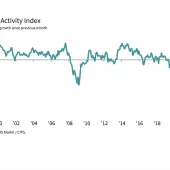Sharp fall in housing activity leads to construction recession
Construction output expected to fall by 7.0% in 2023, according to the CPA’s Summer Forecasts
THE construction industry is expected to experience an acute recession this year driven by double-digit falls in the two largest construction sectors: private housing new build and private housing repair, maintenance, and improvement (RM&I).
The Construction Products Association (CPA) predicts that construction output will fall by 7.0% in 2023 before recovering slowly in 2024 with growth of just 0.7%, according to its Summer Forecasts published today. With a flatlining UK economy, falling real wages, and mortgage rates now expected to continue rising over the next six months, households are likely to endure a difficult year and the demand for both new housing and improvements works will be hit hard.
Infrastructure activity is expected to remain at high levels due to major projects already down on the ground. Even in this sector, however, output is likely to fall marginally compared to last year following the government announcing delays to roads and rail projects.
Private housing output is worth £41 billion per year to the UK economy and is forecast to be the worst-affected construction sector in 2023. In this sector, activity was already forecast to fall due to the lagged impacts of the Government’s calamitous Mini Budget and the resultant spike in mortgage rates last year, which led to a 30–40% fall in demand in the fourth quarter of 2022.
Whilst demand started to recover during the first quarter of this year as mortgage rates fell, this proved to be a mere blip and over the summer, the Bank of England raised interest rates once again, in turn raising market expectations of peak interest rates beyond 6.0%.
Given the impact of this on mortgage rates, demand will be badly affected in both the general housing market and house-building sector. House builders are likely to continue focusing on completions to meet the lower levels of demand rather than starting any new developments.
Overall, private housing starts are forecast to fall by 25.0% in 2023. Completions and output are expected to fall by 19.0% before a recovery starting in the second half of next year, which will see a rise of 2.0% in 2024 overall.
Private housing RM&I is worth £29 billion each year to the UK economy and activity reached historic highs between 2020 and early 2022 due to increased working from home and a ‘race for space’. Since March 2022, however, activity has been falling due to persistent inflation, rising interest and mortgage rates, and falling real wages. Overall, private housing RM&I output is forecast to fall by 11.0% this year before growth of 2.0% next year in line with a recovery in household finances.
Infrastructure activity down on the ground remains strong due to major projects such as HS2, the Thames Tideway Tunnel and Hinkley Point C. These projects are all late and over budget but continue to provide growth to a sector worth £28 billion per year. Higher activity from these projects is likely, however, to be offset by government delays to new roads and rail projects. In addition, budgetary constraints for councils, combined with cost inflation issues, are likely to mean a decline in the volume of local transport work.
Due to recent concerns over the quality of rivers across the country, water companies intend to accelerate delivery on 31 investment schemes between 2023 and 2025, which may positively contribute activity to the sector. Nonetheless, there remain serious questions over whether this will see a major uplift to infrastructure output in the near-term given skills and product availability as well as financial issues at companies such as Thames Water. As a result, infrastructure output is expected to fall, albeit by only 0.5% in 2023, before growth of 1.0% in 2024.
Commenting on the Summer Forecasts, CPA economics director Professor Noble Francis said: ‘More than half of construction activity is provided by the three largest sectors: private housing new build, private housing repair, maintenance and improvement, and infrastructure. Both housing new build and RM&I had already taken a hit in the fourth quarter of 2022 due to falling real wages, the rising cost of living, economic uncertainty, and the effect of the Government’s calamitous Mini Budget on mortgage rates.
‘Further interest rate and mortgage rate rises this year, as well as falling real wages, are likely to lead to sharp falls in demand within the house building and improvements sectors. Exacerbating this for the construction industry are government announcements of delays to roads and rail projects, despite infrastructure activity remaining relatively high.
‘The Government’s previously stated ambitions – building 300,000 net additional homes per year, investing £600 billion in an infrastructure pipeline, delivering Levelling Up, and transitioning to Net Zero – all sound like hollow soundbites now given its lack of commitment and investment.
‘It is essential that the Government uses its Autumn Statement later this year to invest in UK construction – an industry which employs more than three million people across its supply chain and provides the homes and infrastructure that are so vital for the country’s near-term needs and long-term productivity growth.’







